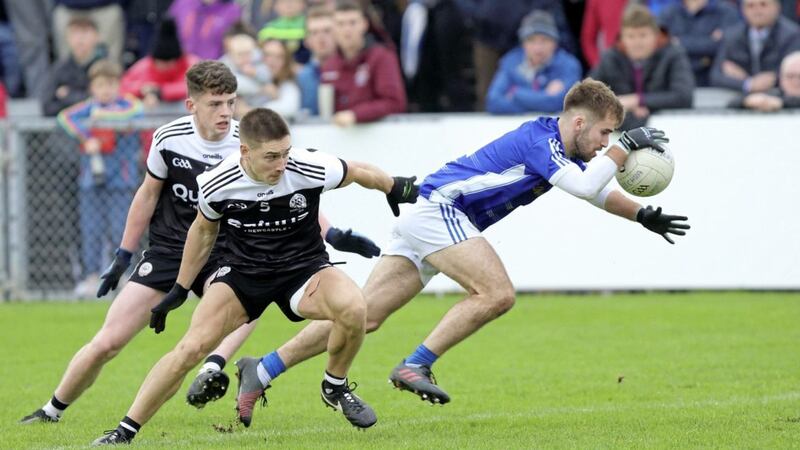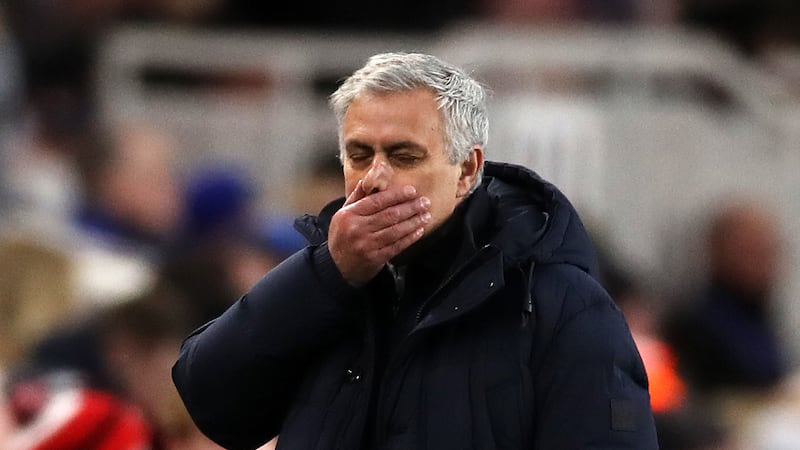After months of up and downs and ins and outs we got the most concrete word last week that the race for Sam and Liam 2020 will go ahead after all.
Club football has been given it’s unparalleled moment in the sun and boy has it grabbed its chance.
In fact the club competitions have been so good and interest levels so high that for many, including myself, there was the increasing desire to see the Provincial and All-Ireland club series played out and forego inter-county completely for 2020.
I was particularly of this opinion when it was being muted that the GAA would be borrowing up to £20million to run the competitions and to help fund the county boards regarding team expenses.
The Ulster Club is always a fantastic competition but could you imagine it this year when there has been so much attention on the local club championships as we looked to see the various champions go toe to toe.
Alas it is not to be.
There is surely much to consider in the success of the entertainment and interest generated by the club championships on their stretched shoestring budgets over the past few months.
This is particularly so when viewed against the £15-20million needed to run the county competitions.
The overall quality of player in terms of skill and athleticism will increase but will that bring a corresponding increase in the entertainment or quality of the games?
Minus the crowds and the atmosphere they generate, will the county game still merit the sheer scale of finances that they swallow up?
In straight comparison may not be fair however.
The winter game will certainly be a dampener on the sort of football the county teams will be able to produce.
The other obvious handicap is that all club championships are tiered.
The number of narrow wins, extra-times and penalties that has led to the ongoing excitement level is a direct result of teams playing others at their level.
For the most part we know that in the inter-county championship such occasions will be thin on the ground. particularly outside Ulster.
The early rounds of the championship may well struggle to live up to the price tag. Yet there is still scope for optimism.
The straight knockout format is the ultimate generator of tension and excitement and, IF COVID behaves (and yes, going on its record that’s a big if), crowd restrictions may be further reduced by the time championship comes around.
The recent announcements about the resumption of the county games also included a list of controls put in place to balance the financial impact of COVID on money generation and the costs associated with the inter-county game.
These include: limiting panel sizes to 32 players, restricted sizes of backroom teams, limiting collective training/match participation to three times a week, no overnight stays for matches less than 130miles away, no training camps and teams not allowed to gather more than three hours prior to a game.
Usually when authorities come out with a list of rules featuring nothing but no’s and don’ts it is met with annoyance and disdain.
The GAA suits in particular must often feel like everything they do is met with the appreciation levels of a sulky teenager to a well-intentioned parent.
From a player point of view though, these are all winners.
Restricting collective training sessions, training camps, overnight stays, and length of meeting up time prior to games will feel like Christmas has come early for the county players particularly facing into winter after an intensive club season.
Not unlike how COVID has allowed the GAA to inadvertently discover the potential of a ‘split’ season, these COVID induced proposals could well serve as a template for longer-term moves to address the financial costs of the county game.
The entertainment value, competitive edge, skill and drama that are associated with our games at their very best will, for me, be in no way diluted with decreasing collective sessions or reducing time in meeting rooms and training camps.
There are of course obvious issues most notably the policing of such restrictions. Is it up to the county boards or maybe the GPA acting as a players union?
Will there be effective deterrents in place? Or are the restrictions purely financial in design, i.e. is the amount of quoted activity the amount that the GAA will pay receipts for?
Does this allow additional activities to occur but purely at the county boards expense.
The sound-bites emanating from Croke Park about the GAA not being liable for any financial costs over and above the permitted level would suggest that a county can fund its own activities as they see fit thus limiting much of the potential good the new temporary regulations might bring.
Big counties with well-heeled donors or big sponsorship deals such as Dublin, Kerry and Mayo would be able to function at a different level than other teams.
In making moves to control costs the GAA cannot miss the twin chance of bringing some degree of financial fair play to the table,
As difficult as it will be they must try to create a more equal playing field across teams in this regard.
I imagine county managers on the one hand are irked by any thought of limitation on preparing their teams to the absolute best levels possible.
At the same stage, for the long-term health of our amateur games as we know them, they would also see the benefits.
The road to peak sporting performance increasingly goes towards the professional model of preparations with their associated costs and player demands.
Dave Brailsford’s concept of marginal gains confirms this as an endless road with no turn off.
In the GAA world, where all teams are pushing the same direction it has failed in making teams more competitive or levelling the playing field. In fact, quite the opposite.
Consequently, if county managers could be 100 per cent assured that all teams were limited to the same amount, many would relish the more traditional levels of preparation invoked in these proposals.
COVID has been a disaster, of which we are all fed up with and yet still endure.
Given that the fixture crisis and the spiralling financial costs were two of the biggest issues facing our games, we could however end up reflecting that 2020 and its pandemic were the seismic force that changed the entire direction our games were heading.
With club championships getting to the business end and a straight knock-out All-Ireland race ahead there is much to look forward to too.
No matter what way things go from here, as we sit to eat our Christmas dinner it seems fair to suspect that the GAA world will have been given much food for thought because of COVID-19.







